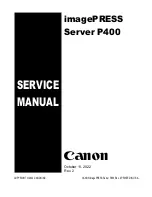
142
14
14
Security features14
Overview
14
In today’s world there are many security threats to your network and the data that travels over it. Your Brother
machine employs some of the latest network security and encryption protocols available today. These
network features can be integrated into your overall network security plan to help protect your data and
prevent unauthorized access to the machine. This chapter explains various security protocols supported and
how to configure them.
Security terms
14
CA (Certificate Authority)
A CA is an entity that issues digital certificates (especially X.509 certificates) and vouches for the binding
between the data items in a certificate.
CSR (Certificate Signing Request)
A CSR is a message sent from an applicant to a CA in order to apply for issue of a certificate. The CSR
contains information identifying the applicant, the public key generated by the applicant and the digital
signature of the applicant.
Certificate
A Certificate is the information that binds together a public key with an identity. The certificate can be used
to verify that a public key belongs to an individual. The format is defined by the x.509 standard.
Digital signature
A Digital signature is a value computed with a cryptographic algorithm and appended to a data object in
such a way that any recipient of the data can use the signature to verify the data's origin and integrity.
Public key cryptosystem
A Public key cryptosystem is a modern branch of cryptography in which the algorithms employ a pair of
keys (a public key and a private key) and use a different component of the pair for different steps of the
algorithm.
Shared key cryptosystem
A Shared key cryptosystem is a branch of cryptography involving algorithms that use the same key for two
different steps of the algorithm (such as encryption and decryption).
Security features
14
















































